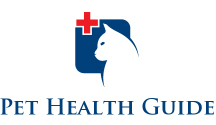Contents
Overview Eye Infection in Dogs:
Canine eye infection is the most common condition affecting a dogs eye. Infections may be primary (starting in the eye) or secondary (spreading from another area to the eye) in nature. Bacteria, viruses,and fungus may cause primary forms of infection, while allergies and other non infectious conditions may leave dog eyes with infection as a secondary condition.
Most of canine eye problems are characterized by symptoms such as dog eye discharge, redness, inflammation, irritation and swelling. Dog eye symptoms that are specifically associated with an infection in dog eyes include mucus and/or the combination of mucus and puss (mucopurulent eye discharge). Problems that don’t heal quickly are also suspected for being an infection.
Diagnosis of a dog eye infection is based upon conducting a detailed clinical examination and via the identification of any causative organisms through laboratory tests. Canine eye infection is treated with specific drugs such as antibiotics, specific prescriptive drugs, natural remedies and management of the condition.
Causes of Canine Eye Infection:
Dog Eyes are delicate organs which are supplied with highly responsive nerves, thus the eyes are highly sensitive to a dog’s external environment. The eyes are protected by eyelids, eye lashes, conjunctiva, tear production and blinking . Even with all this natural protection, the surface of the eye is still exposed to many environmental factors.
This is why the eye is vulnerable to many foreign infectious and non infectious agents. A canine eye infection is caused by microbes such as bacteria, viruses, fungus etc, but the condition may also occur as a secondary problem which results from non infectious conditions such as dog eye allergies, anatomical defects, physiological disorders, parasitic infestation and to those conditions which spread into the dog eyes from the face.
Canine eye infection may occur in different anatomical parts of the eye. For example, canine conjunctivitis is a common type of infection. It occurs when the Conjunctiva are directly exposed to the environment, making it prone to agents which can cause an infection to take hold.
Other canine eye infections such as bleopharitis and dacryosystitis are primary forms of infection, while secondary dog eye infections may progress into parts of the eye as the result of other eye conditions in dogs such as glaucoma, ulcerations, tear sac blockage and tumors
Symptoms of Canine Eye Infection
Most of canine eye problems are characterized by typical signs. These signs include irritation, swelling, redness, inflammation, partial eye dysfunction and most importantly, dog eye discharges. This is why, routine eye examination cannot reveal the exact cause and status of a dog eye condition. It cannot be assessed clinically.
Even if dog eye infections occur in specific anatomical parts of the eye, the infection can affect the physiology/condition of the entire eye, therefore the symptoms mentioned above are noticed. The dog eye discharge which has mucus or puss mixed in is an indication of an infection. This type of discharge tends to be dense and viscous or thick. Tears are usually mixed with pus, dead tissues and microbial agents.
Canine eye infection that affect the surface of the eye, such as conditions that affect the conjunctiva and the eyelashes can be observed directly, but problems that occur in the inner parts of eye and secondary infections require a thorough clinical examination.
Diagnosis of Canine Eye Infection:
Since the eye is a delicate organ, it requires more attention during an examination. Also, since the symptoms are common to to many conditions, the eye needs to be examined by special equipment in adequate light. A dogs clinical history is very helpful in identifying the possible cause of a problem such as an accident, inherited problem, anatomical defects, and the length of time the condition has been affecting the dog.
In complicated cases, along with conducting a clinical examination and taking a dog’s history, laboratory tests such as the culturing and isolation of microbes from dog eye discharges and tear tests are usually performed. For severe conditions, additional procedures such as taking a tumor biopsy, testing tear sac capacity and detailed examination of the eye is required to confirm the cause of the condition and eye status.
Treatment of Canine Eye Infection:
After confirming the exact form and location of a dog eye infection, treatment is administered with specific drugs such as antibiotics and steroids. Supportive measures include regular cleaning of the eye with a isotonic sterile dog eye wash solution and by prohibiting the dog from scratching or injuring the eye.
The use of natural remedies are very helpful in achieving a timely recovery with specific product recommendations mentioned below. Since the eyes are delicate organs, drugs administered locally are usually available in the form of eye ointments, drops and creams. Medications should be delivered with care and as per the instructions of a veterinarian.
An owner should never try to treat dog eye problems with his/her own eye products formulated for humans or for other species of animals. Similarly, the eye should be washed/cleaned with isotonic solutions such as Tomlyn Eye Wash For Dogs and eye discharge should be cleaned frequently, so that any eye irritation can be reduced and so that the patient feels comfortable.
Natural remedies such as Eye Heal are supportive formulations, which can be administered to enhance recovery and to improve overall eye health. Other natural remedies can be used to boost a dogs immunity such as Immunity and Liver Support.
References:
Merck Veterinary Manual (Merck & Co.)
To More Information on Dog Health
From Canine Eye Infection to Pet Health Guide Home

